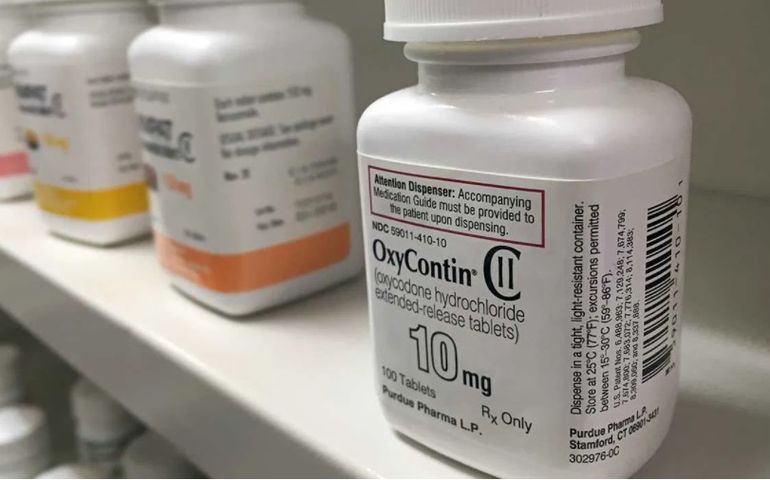
Processing Your Payment
Please do not leave this page until complete. This can take a few moments.
- News
-
Editions
-
- Lists
-
Viewpoints
-
Our Events
-
Event Info
- Women's Leadership Forum 2025
- On the Road with Mainebiz in Bethel
- Health Care Forum 2025
- On The Road with Mainebiz in Greenville
- On The Road with Mainebiz in Waterville
- Small Business Forum 2025
- Outstanding Women in Business Reception 2025
- On The Road with Mainebiz in Bath
- 60 Ideas in 60 Minutes Portland 2025
- 40 Under 40 Awards Reception 2025
- On The Road with Mainebiz in Lewiston / Auburn
- 60 Ideas in 60 Minutes Bangor 2025
Award Honorees
- 2025 Business Leaders of the Year
- 2024 Women to Watch Honorees
- 2024 Business Leaders of the Year
- 2023 NextUp: 40 Under 40 Honorees
- 2023 Women to Watch Honorees
- 2023 Business Leaders of the Year
- 2022 NextUp: 40 Under 40 Honorees
- 2022 Women to Watch Honorees
- 2022 Business Leaders of the Year
-
-
Calendar
-
Biz Marketplace
- News
- Editions
- Lists
- Viewpoints
-
Our Events
Event Info
- View all Events
- Women's Leadership Forum 2025
- On the Road with Mainebiz in Bethel
- Health Care Forum 2025
- On The Road with Mainebiz in Greenville
- On The Road with Mainebiz in Waterville
- + More
Award Honorees
- 2025 Business Leaders of the Year
- 2024 Women to Watch Honorees
- 2024 Business Leaders of the Year
- 2023 NextUp: 40 Under 40 Honorees
- 2023 Women to Watch Honorees
- 2023 Business Leaders of the Year
- + More
- 2022 NextUp: 40 Under 40 Honorees
- 2022 Women to Watch Honorees
- 2022 Business Leaders of the Year
- Nomination Forms
- Calendar
- Biz Marketplace
Maine will settle with Purdue Pharma, Sacklers for $20M, but is that enough?
 File photo / Courtesy, Healthline
OxyContin, a long-acting form of oxycodone, has been produced and marketed since 1995 by Purdue Pharma, headquartered in Stamford, Conn.
File photo / Courtesy, Healthline
OxyContin, a long-acting form of oxycodone, has been produced and marketed since 1995 by Purdue Pharma, headquartered in Stamford, Conn.
Like 14 other states, Maine is expecting to receive part of a $4.3 billion legal settlement reached last week with the maker of painkiller OxyContin, Purdue Pharma LP.
But Maine’s share, an estimated $20 million, pales in comparison to the amounts other states may get — despite the especially high toll prescription opioid drugs like Purdue’s have taken here.
Maine Attorney General Aaron M. Frey and AGs for the 14 other states announced the payouts after agreeing not to contest a Chapter 11 bankruptcy plan by Stamford, Conn.-based Purdue. The company petitioned for bankruptcy protection in 2019 while facing more than 3,000 lawsuits related to the opioid crisis, including suits by cities, counties, territories, tribes and nearly every state including Maine.
Purdue and its owners, members of the Raymond and Mortimer Sackler families, have been repeatedly accused of deceptively marketing OxyContin, causing widespread addiction and many thousands of deaths. The company and the Sacklers have denied the allegations.
The federal government in October accepted an $8.3 billion settlement of criminal and civil charges against Purdue, and 23 states settled their suits in 2019. If the additional settlement reached last week is approved, the dozen remaining state suits would include ones by Connecticut, New Hampshire, Rhode Island and Vermont.
The settlement calls for the Sacklers to pay out a total $4.325 billion over nine years, with another $175 million going from family trusts to a national opioid abatement fund. In addition, the families will release a total of 33 million related documents.
“No amount of money can undo the damage Purdue and the Sacklers have done to millions of families across Maine and the country,” Frey said in a news release. “But the public disclosure required of Purdue in this agreement is important for understanding how the opioid crisis developed, and the money states are receiving for abatement is crucial for investing in prevention, treatment, and recovery efforts.”
Difficult math
The states’ agreement must still be approved by a federal bankruptcy court in New York. Other creditors have a deadline of today, July 14, to vote on accepting the bankruptcy plan.
Meanwhile, the states have been touting the deal they’ve collectively worked out with Purdue. According to news releases, the settlement amounts are estimated to be:
- Pennsylvania, $225 million
- New York, $200 million
- New Jersey, $110 million
- North Carolina, $100 million
- Massachusetts, $90 million
- Virginia, $80 million
- Wisconsin, $65 million
- Colorado, $50 million
- Minnesota, $50 million
- Iowa, $25 million
- Idaho, $22 million
- Maine, $20 million
- Hawaii, $13 million.
(The attorneys general in Illinois and Nevada issued releases on the settlement, but did not include estimates of the amounts their states might receive.)
None of the states appear to have provided any explanation of the estimates. In Maine, Frey’s office refused to provide detail about the basis for the $20 million figure, and a spokesman on Monday told Mainebiz, “For now, our release speaks for itself.”
However, the 644-page bankruptcy plan appears to include calculations to create the estimates.
Among the factors in the arithmetic for each state: the volume of prescription opioid sales from 2006 to 2014, the number of overdose deaths, the incidence of pain reliever use disorder, the state population and other metrics. All of them are weighted in a complex formula “developed through extensive negotiations among the Attorneys General of various states,” according to the plan.
Math, as the catchphrase goes, is hard.
According to the bankruptcy plan that states have signed off on, Maine’s share would be 0.5725492304% of the Purdue funds set aside for payments to states, the District of Columbia and U.S. territories. But there appear to be inconsistencies in the breakdown. For example, Idaho is listed as receiving a slightly smaller percentage than Maine’s share, but will receive nearly $2 million more, according to the Idaho attorney general.
An especially tough toll
Maine’s suit, filed in June 2019, claims Purdue and the Sackler family “designed, financed and waged a campaign to mislead prescribers, patients and the public into believing their opioid drugs were safe to treat pain on a long-term basis.”
For example, the suit alleges, Purdue distributed written materials in Maine that misrepresented how addictive prescription opioids can be. From January 2008 and August 2017, Purdue distributed 3,483 different pieces of marketing material to Maine health care professionals, according to the complaint, including 2,000 copies of a single brochure.
The company also nearly doubled its sales staff in Maine and spent $65,000 over three years on food purchases for health care professionals in the state, according to the suit.
What’s more, Purdue worked with a Boston medical school to promote opioid prescribing in Maine — at the very start of the opioid epidemic.

In 2000, Purdue obtained an agreement from Tufts University Medical School to sponsor programs “in response to the situation in Maine,” according to documents cited in another state lawsuit, by Massachusetts.
“Purdue and the Sacklers knew of damning reports of addiction and overdose in Maine caused by Purdue’s opioids. Tufts ran a residency program for family practice physicians and agreed to help Purdue find doctors to attend an event where Purdue could defend its reputation.”
An investigation by Tufts later confirmed the claim, finding that Purdue paid $78,000 to develop at least three such events in Maine during 2000.
Ultimately, Purdue ramped up sales activity in Maine so aggressively that the state’s health care providers wrote prescriptions for opioids including OxyContin at some of the highest rates in the country. In fact, Maine recorded the highest per capita levels of opioid prescribing of any state in the Northeast from 2009 to 2015, according to the U.S. Centers for Disease Control & Prevention.
In Maine, over 1,300 people died from 2009-20 due to prescription opioid drugs. Nationally, deaths each year from prescription opioids rose from 3,442 in 1999 to a peak of 17,029 in 2017.












0 Comments